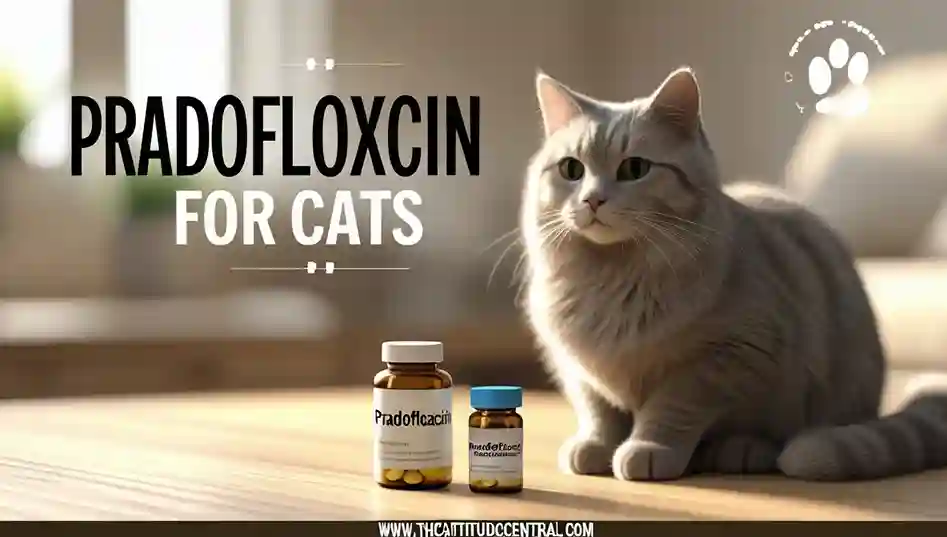As cat lovers, we cherish every quirky behavior our feline companions exhibit—from playful pounces to affectionate head butts. But what if that head contact turns into something more concerning? Cat head pressing is one such behavior that demands immediate attention. Unlike the loving “bunting” where your cat rubs its head against you to mark territory with scent glands, cat head pressing involves a persistent, compulsive action of pushing the forehead against a wall, floor, or furniture for extended periods. This isn’t play or affection; it’s often a red flag signaling underlying health problems affecting the nervous system.
In this comprehensive guide, we’ll dive deep into cat head pressing, exploring its causes, symptoms, diagnosis, and treatment options. Whether you’re noticing this in your own kitty or simply want to stay informed, understanding head pressing in cats can be lifesaving. We’ll rotate through key insights on head pressing in cats, backed by veterinary expertise, and even recommend supportive products to aid recovery. By the end, you’ll feel empowered to act swiftly if feline head pressing ever enters your world.
Head pressing in cats affects all ages and breeds, but it’s more common in seniors due to age-related decline. According to veterinary sources, ignoring feline head pressing can lead to rapid deterioration, as it points to brain or systemic issues. Let’s break it down step by step, ensuring you have the knowledge to keep your cat purring happily.
What Exactly is Cat Head Pressing?
Head pressing in cats is a neurological symptom where a cat repeatedly presses its head against a solid surface, often with a vacant stare or unresponsiveness to surroundings. It’s not a standalone habit but a manifestation of discomfort or dysfunction in the brain. Imagine your cat zoning out, forehead firmly against the wall for minutes at a time—this is classic feline head pressing.
To differentiate, normal head pushing in cats, like greeting you with a gentle rub, releases pheromones and strengthens bonds. But head pressing in cats lacks this joy; it’s rigid and repetitive, sometimes accompanied by pacing or hiding. Vets classify head pressing in cats under “stereotypical behaviors,” which are involuntary and linked to forebrain disorders.
Why does cat head pressing occur? The brain’s pressure-regulating mechanisms fail, prompting the cat to seek relief by compressing the skull against objects. This self-soothing attempt highlights the urgency: feline head pressing is rarely benign. In one study on feline neurology, over 70% of cases involving head pressing in cats traced back to treatable yet time-sensitive conditions.
For cat owners spotting head pressing in cats, the first step is observation. Note frequency, duration, and context—does it happen after meals, during stress, or randomly? This data aids vets in pinpointing causes of feline head pressing.
Common Causes of Cat Head Pressing
Unraveling the root of head pressing in cats requires looking at the brain and body holistically. Multiple factors can trigger this symptom, from infections to toxins. Below, we explore the primary culprits behind cat head pressing.
Neurological Disorders and Feline Head Pressing
At the forefront are neurological issues, where the brain itself is compromised. Encephalitis—inflammation of the brain—tops the list for causing feline head pressing. Viral or bacterial infections swell brain tissue, increasing intracranial pressure and forcing cats to press for relief. Symptoms escalate quickly, making early detection vital for feline head pressing cases.
Brain tumors also drive head pressing in cats. These growths, benign or malignant, disrupt neural pathways, leading to compulsive behaviors like head pressing. Older cats over 10 years are at higher risk, with feline head pressing often paired with seizures or vision loss.
Trauma plays a role too. A fall or car accident can cause concussions, swelling, and subsequent head pressing in cats as the brain heals unevenly. Even mild head injuries in cats can manifest as feline head pressing days later.
Systemic Diseases Triggering Feline Head Pressing
Beyond the brain, systemic woes like liver disease provoke head pressing in cats. Hepatic encephalopathy occurs when toxins build up due to poor liver function, crossing the blood-brain barrier and causing disorientation—cue the pressing. Cats with chronic kidney issues or diabetes may exhibit head pressing in cats as metabolic imbalances affect cognition.
Toxicity is another sneaky cause of head pressing in cats. Ingestion of household poisons like antifreeze, certain plants (lilies), or medications leads to neurological fallout. Symptoms of feline head pressing from toxins appear within hours, demanding detox protocols.
Infectious and Inflammatory Factors in Feline Head Pressing
Feline infectious peritonitis (FIP) and toxoplasmosis are culprits in inflammatory head pressing in cats. These parasites or viruses infiltrate the central nervous system, sparking immune responses that inflame tissues. Head pressing in cats here signals advanced stages, often with fever or weight loss.
In rare cases, idiopathic epilepsy links to head pressing in cats, where seizures disrupt normal activity. Stress exacerbates these, turning minor twitches into full-blown feline head pressing episodes.
Understanding these causes empowers proactive care. Regular check-ups can catch precursors to head pressing in cats, like elevated liver enzymes or early infections.
Recognizing Symptoms Alongside Head Pressing in Cats
Head pressing in cats rarely flies solo; it’s part of a symptom cluster screaming for help. Spotting these companions to head pressing in cats can accelerate diagnosis.
Lethargy and disorientation top the list. Your once-vivacious cat may stagger, circle endlessly, or stare blankly—hallmarks of feline head pressing tied to vestibular disease. Appetite loss follows, as nausea from brain pressure curbs eating.
Seizures manifest in 40% of feline head pressing cases, ranging from mild tremors to full convulsions. Post-seizure, feline head pressing intensifies as the brain recovers.
Behavioral shifts include hiding, aggression, or vocalizing unusually. Vision problems, like bumping into walls, signal optic nerve involvement.
Monitor for physical signs: dilated pupils, drooling, or head tilting. In chronic head pressing in cats, weight loss and dehydration compound the issue. Journal these observations; they’re gold for your vet.
Diagnosing Head Pressing in Cats: The Vet’s Toolkit
Suspecting head pressing in cats? Rush to the vet—delays can be fatal. Diagnosis starts with a thorough history: when did feline head pressing begin? Any recent exposures?
Physical exams check neurological function—reflexes, balance, pupil response. Bloodwork screens for toxins, infections, or organ failure underlying head pressing in cats.
Imaging is crucial: MRI or CT scans visualize brain abnormalities causing head pressing in cats, like tumors or abscesses. Cerebrospinal fluid taps detect inflammation.
For elusive causes of head pressing in cats, EEGs monitor electrical activity, ruling out epilepsy. Costs vary—$200 for basics to $2,000+ for advanced scans—but they’re investments in your cat’s life.
Treatment Strategies for Cat Head Pressing
Treating head pressing in cats hinges on the cause, but supportive care is universal. Hospitalization stabilizes severe cases, with IV fluids combating dehydration from feline head pressing episodes.
For infectious head pressing in cats, antibiotics or antivirals target pathogens. Anti-inflammatory steroids reduce brain swelling, easing pressure and halting head pressing in cats.
Tumor-induced feline head pressing may require surgery, radiation, or chemotherapy. Prognosis improves with early intervention—some cats achieve remission.
Toxicity from head pressing in cats demands immediate decontamination: induced vomiting or activated charcoal. Liver support meds like SAMe aid recovery.
Seizure control uses anticonvulsants like phenobarbital, monitored via blood levels to prevent side effects in cat head pressing management.
Holistic aids shine too. Acupuncture or CBD oils (vet-approved) soothe neurological feline head pressing symptoms. Always consult pros before supplements.
Recommended Products for Supporting Cat Head Pressing Recovery
While no product cures head pressing in cats, supportive ones enhance comfort. For calming during recovery, consider the Feliway Optimum Diffuser— a pheromone plug-in that reduces stress and anxiety, potentially minimizing cat head pressing triggers. Available on Amazon for around $30, it lasts 90 days and is vet-recommended for neurological support.
Dr. Bill’s Feline Cognitive Support supplement bolsters brain health with antioxidants, ideal for age-related head pressing. Priced at $20 on Amazon, users report improved alertness in cats post-diagnosis.
For anxiety-tied head pressing in cats, PranaPets Nervous System Support herbal blend calms twitching and supports nerves. This $40 Amazon gem uses natural ingredients like chamomile, safe for long-term use.
These aren’t substitutes for vet care but complementary tools in battling head pressing.
Prevention Tips to Avoid Head Pressing
Prevention beats cure for head pressing in cats. Annual wellness exams catch brewing issues early. Vaccinate against FIP and toxoplasmosis to sidestep infectious head pressing in cats.
Cat-proof your home: secure toxins, plants, and high perches to prevent trauma-induced head pressing in cats. A balanced diet with omega-3s supports brain health, warding off metabolic head pressing.
Enrich environments reduce stress—scratching posts, toys, and pheromone diffusers like Feliway prevent anxiety-fueled head pressing. Monitor seniors closely; cognitive games keep minds sharp.
Hydration stations and elevated bowls aid kidney health, indirectly curbing cat head pressing from organ failure.
Home Care During Cat Head Pressing Episodes
If head pressing strikes, create a quiet, dim space—stress amplifies it. Offer soft bedding away from drafts. Hand-feed palatable foods to combat appetite loss in head pressing.
Track episodes in a log: time, duration, triggers. This refines treatment for head pressing. Hydrate with wet food or fountains; dehydration worsens neurological head pressing.
Gentle grooming soothes; avoid forcing interaction during head pressing bouts. Join support groups on platforms like Reddit for shared head pressing stories.
Remember, home care supports but doesn’t replace professional intervention for head pressing.
When to Seek Emergency Help for Cat Head Pressing
Head pressing warrants an ER visit if paired with seizures, collapse, or non-stop pressing. Time is brain tissue—delays in head pressing can lead to permanent damage. Call your vet immediately; describe head pressing details for triage.
In after-hours, pet ERs handle feline head pressing crises with 24/7 diagnostics. Better safe than sorry with head pressing in cats.
The Emotional Side of Dealing with Head Pressing
Witnessing head pressing is heart-wrenching. Owners often feel guilt, but knowledge dispels it— head pressing stems from illness, not neglect. Lean on communities; sharing feline head pressing journeys fosters resilience.
Celebrate small wins: a wag-free day post-treatment for head pressing in cats. Professional counseling for pet loss prepares if head pressing signals end-stage disease.
Your bond transcends head pressing in cats; it’s a testament to unwavering love.
FAQs About Cat Head Pressing
Based on trending searches and common queries, here are answers to top questions on head pressing:
Why Is My Cat Pressing Its Head Against the Wall?
Cat head pressing against walls signals neurological distress, often from brain swelling or toxins. Unlike affectionate rubs, it’s compulsive and concerning—seek vet care pronto.
Is Cat Head Pressing Always Serious?
Yes, cat head pressing is a medical emergency indicator. While rare benign mimics exist, 90% link to grave issues like tumors or infections.
What’s the Difference Between Cat Bunting and Head Pressing?
Bunting is social, joyful head-rubbing for scent-marking; cat head pressing is rigid, unresponsive wall-pushing from pain or confusion.
How Do You Treat Cat Head Pressing at Home?
Home remedies for head pressing are supportive only—use calming diffusers and monitors. True treatment requires veterinary diagnosis and meds.
Can Stress Cause Cat Head Pressing?
Stress alone rarely causes head pressing, but it exacerbates underlying conditions. Calming aids help manage, but rule out medical roots first.
Conclusion
Head pressing in cats is a wake-up call, but armed with this guide, you’re ready to respond. From decoding causes to implementing treatments, proactive steps safeguard your cat’s vitality. Remember, early action turns the cat head pressing from crisis to conquerable challenge.
Share your cat head pressing stories below—together, we amplify awareness. Stay vigilant, cat parents; your furry family deserves it.
Sources:



